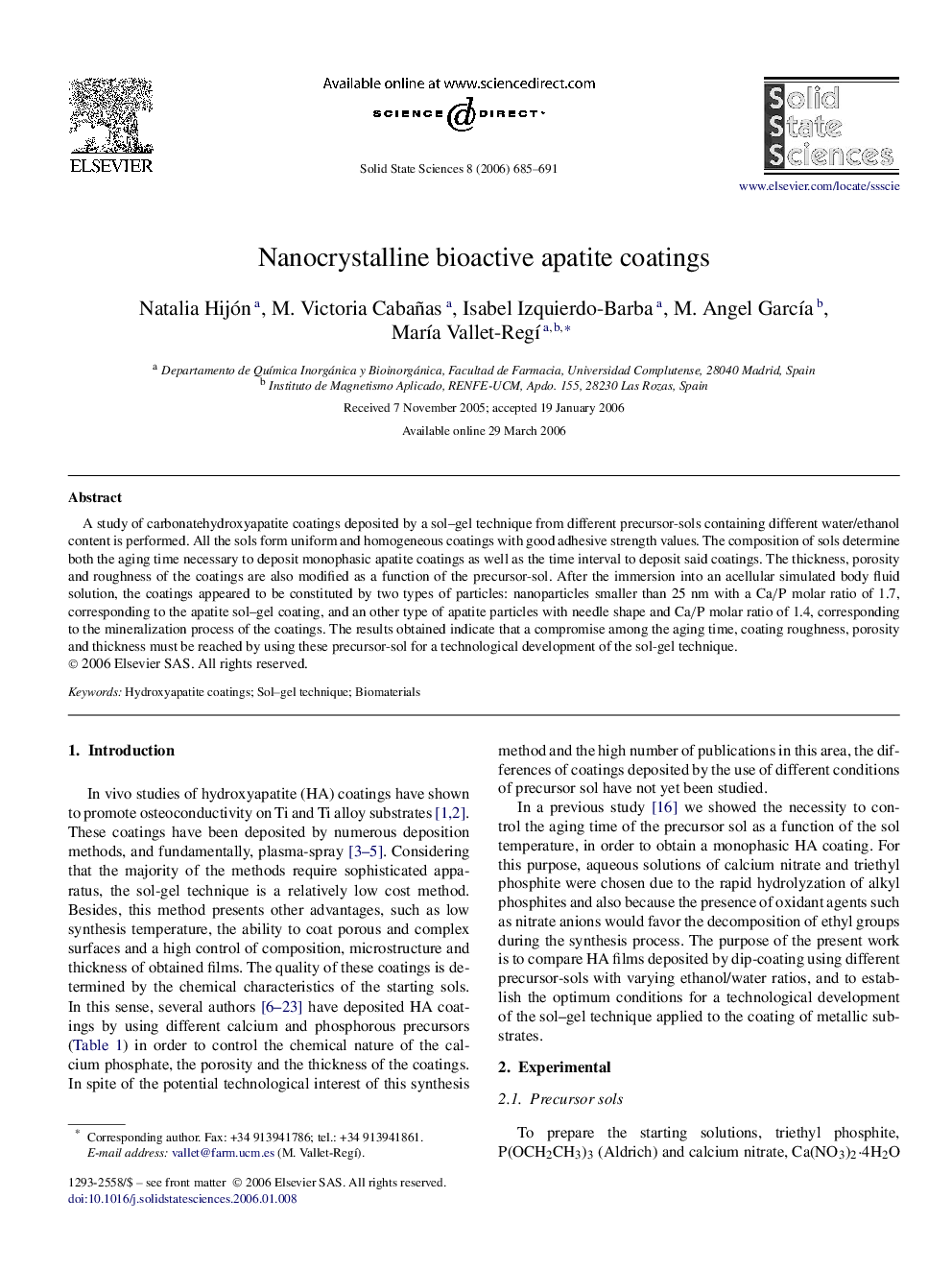| Article ID | Journal | Published Year | Pages | File Type |
|---|---|---|---|---|
| 1507039 | Solid State Sciences | 2006 | 7 Pages |
A study of carbonatehydroxyapatite coatings deposited by a sol–gel technique from different precursor-sols containing different water/ethanol content is performed. All the sols form uniform and homogeneous coatings with good adhesive strength values. The composition of sols determine both the aging time necessary to deposit monophasic apatite coatings as well as the time interval to deposit said coatings. The thickness, porosity and roughness of the coatings are also modified as a function of the precursor-sol. After the immersion into an acellular simulated body fluid solution, the coatings appeared to be constituted by two types of particles: nanoparticles smaller than 25 nm with a Ca/P molar ratio of 1.7, corresponding to the apatite sol–gel coating, and an other type of apatite particles with needle shape and Ca/P molar ratio of 1.4, corresponding to the mineralization process of the coatings. The results obtained indicate that a compromise among the aging time, coating roughness, porosity and thickness must be reached by using these precursor-sol for a technological development of the sol-gel technique.
Graphical abstractFigure optionsDownload full-size imageDownload as PowerPoint slide
